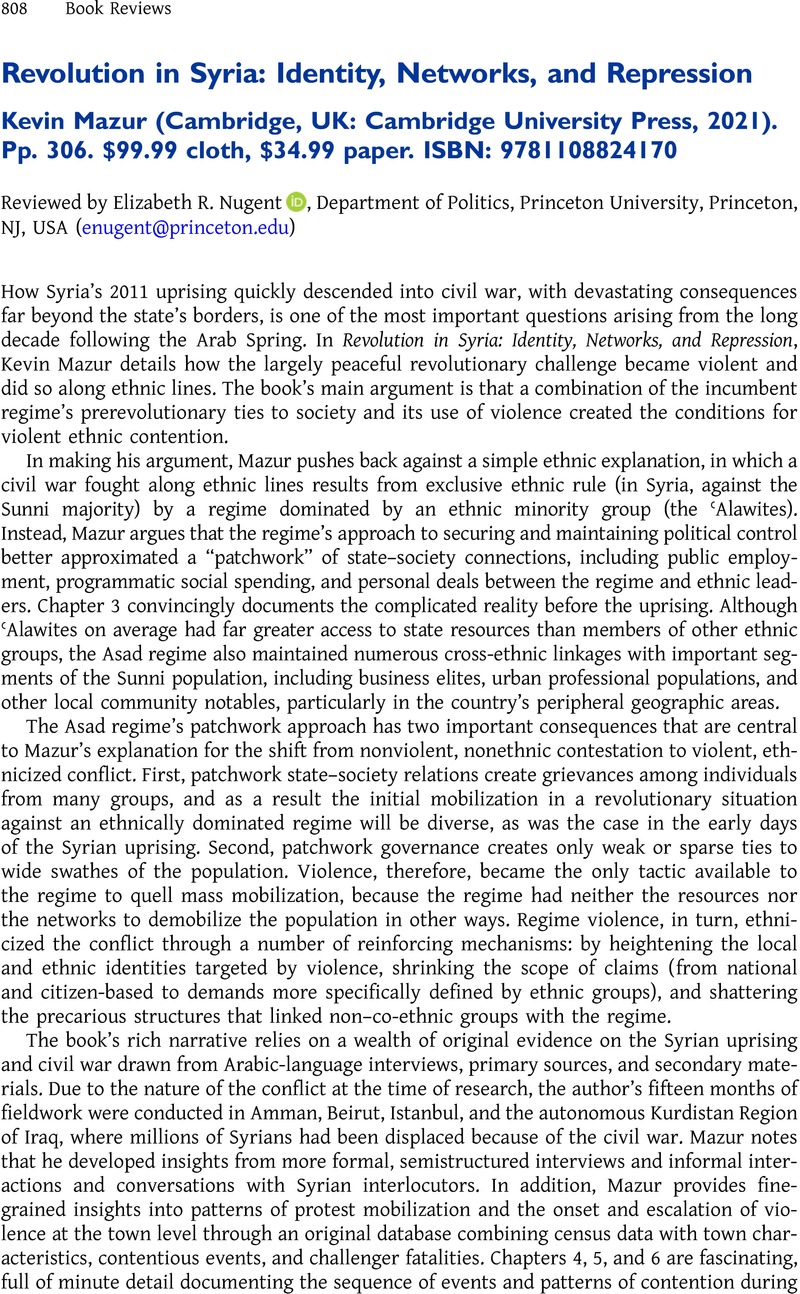No CrossRef data available.
Published online by Cambridge University Press: 12 October 2023

1 Beissinger, Mark R., Jamal, Amaney A., and Mazur, Kevin, “Explaining Divergent Revolutionary Coalitions: Regime Strategies and the Structuring of Participation in the Tunisian and Egyptian Revolutions,” Comparative Politics 48, no. 1 (2015), 1–21CrossRefGoogle Scholar.